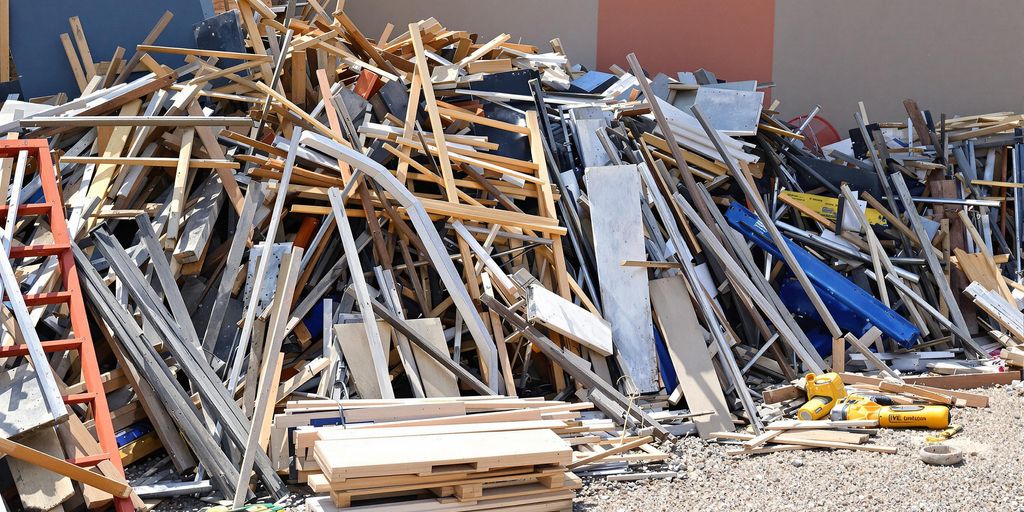Embarking on a home remodel can be an exciting venture, promising an improved living space. However, the process inevitably generates a significant amount of waste, from demolition debris to packaging materials. Without a proper disposal strategy, this clutter can lead to project delays, budget overruns, and compliance issues. Fortunately, managing remodeling waste doesn’t have to be a stressful ordeal.
Planning Your Waste Management Strategy
Every successful remodeling project begins with a solid plan, and waste management should be an integral part of it. Before you begin, estimate the volume and types of waste your project will generate. Consider demolition debris, packaging, hazardous materials, and recyclables. Then, map out when and how you will remove waste as the project progresses.
Key Takeaways
- Rent the Right-Sized Dumpster: Choose a dumpster that fits your project’s needs to avoid overflow or overpaying.
- Salvage, Reuse, or Donate: Give materials like cabinets, doors, and appliances a second life.
- Separate for Recycling: Sort wood, metal, drywall, and concrete for recycling.
- Dispose of Hazardous Waste Responsibly: Never mix hazardous materials with general waste.
- Hire a Junk Removal Service: Consider professional help for bulky items or time constraints.
- Maintain a Clean Worksite Daily: Regular cleanups enhance safety and efficiency.
- Final Cleanup Plan: Ensure all waste is removed upon project completion.
Rent the Right-Sized Dumpster or Bin
Selecting the appropriate dumpster size is crucial for containing waste and keeping your work area clear. A dumpster that’s too small can lead to overflow and additional hauling fees, while one that’s too large might result in unnecessary expenses. Resources are available to help you determine the best fit for your specific remodel, considering dimensions, weight limits, and typical costs.
Salvage, Reuse, or Donate Materials
Not all removed items need to end up in a landfill. Many materials, such as cabinets, doors, appliances, and light fixtures, can be reused or donated to local nonprofit organizations. Donating items can also qualify you for tax deductions, while reusing materials directly reduces the volume of waste requiring disposal, thereby cutting costs.
Separate Waste for Recycling
Construction and demolition projects often produce a mix of recyclable and non-recyclable materials. Properly sorting items like wood, metal, drywall, cardboard, and concrete allows for their recycling. It’s advisable to contact your local recycling center or waste hauler to understand their accepted materials and pickup services. Designating separate bins or piles on-site is essential for effective sorting.
Dispose of Hazardous Waste Responsibly
Home remodels, especially in older homes, can uncover or involve the use of hazardous materials like paint, solvents, adhesives, asbestos-containing materials, and old batteries. These items should never be discarded with general waste. Check with your local municipality for designated drop-off locations or collection programs. In some instances, hiring licensed contractors for hazardous material removal may be necessary.
Consider Hiring a Junk Removal Service
For those short on time or dealing with particularly bulky items, a professional junk removal service can greatly simplify the cleanup process. These services typically handle the loading, hauling, and disposal of non-hazardous materials, making them ideal for post-demolition cleanouts or when dumpsters are not a practical option.
Maintain a Clean Worksite Daily
Establishing a daily cleanup routine is vital for maintaining a safe and functional work environment. Use heavy-duty bags, portable bins, or designated areas to collect debris as it’s generated. Regularly sweeping floors to remove dust, nails, and sharp fragments minimizes tripping hazards and prevents damage to materials.
Finish With a Final Cleanup Plan
Once the main remodeling work is complete, a final cleanup is still required. Schedule a final pickup for your dumpster or any remaining waste. Conduct a thorough walkthrough of the site, paying attention to often-overlooked areas like attics or crawlspaces, to ensure nothing has been missed. A final sweep to clear dust and debris will prepare the space for inspection, staging, or occupancy.
Effectively managing waste is a critical, though often overlooked, aspect of home remodeling. By planning disposal strategies in advance, utilizing the right equipment, and maintaining consistent cleanup efforts, you can significantly reduce stress and avoid project delays.


